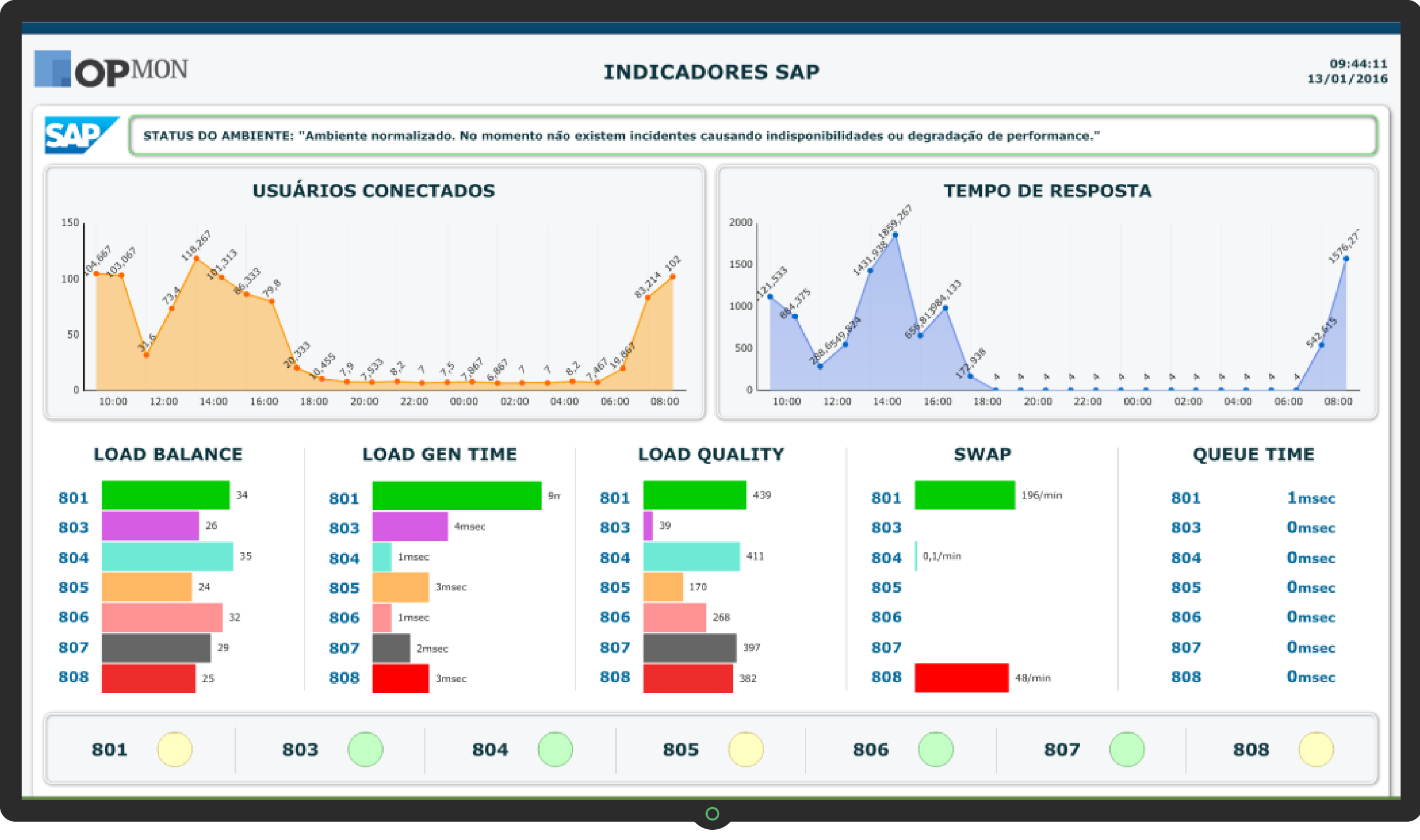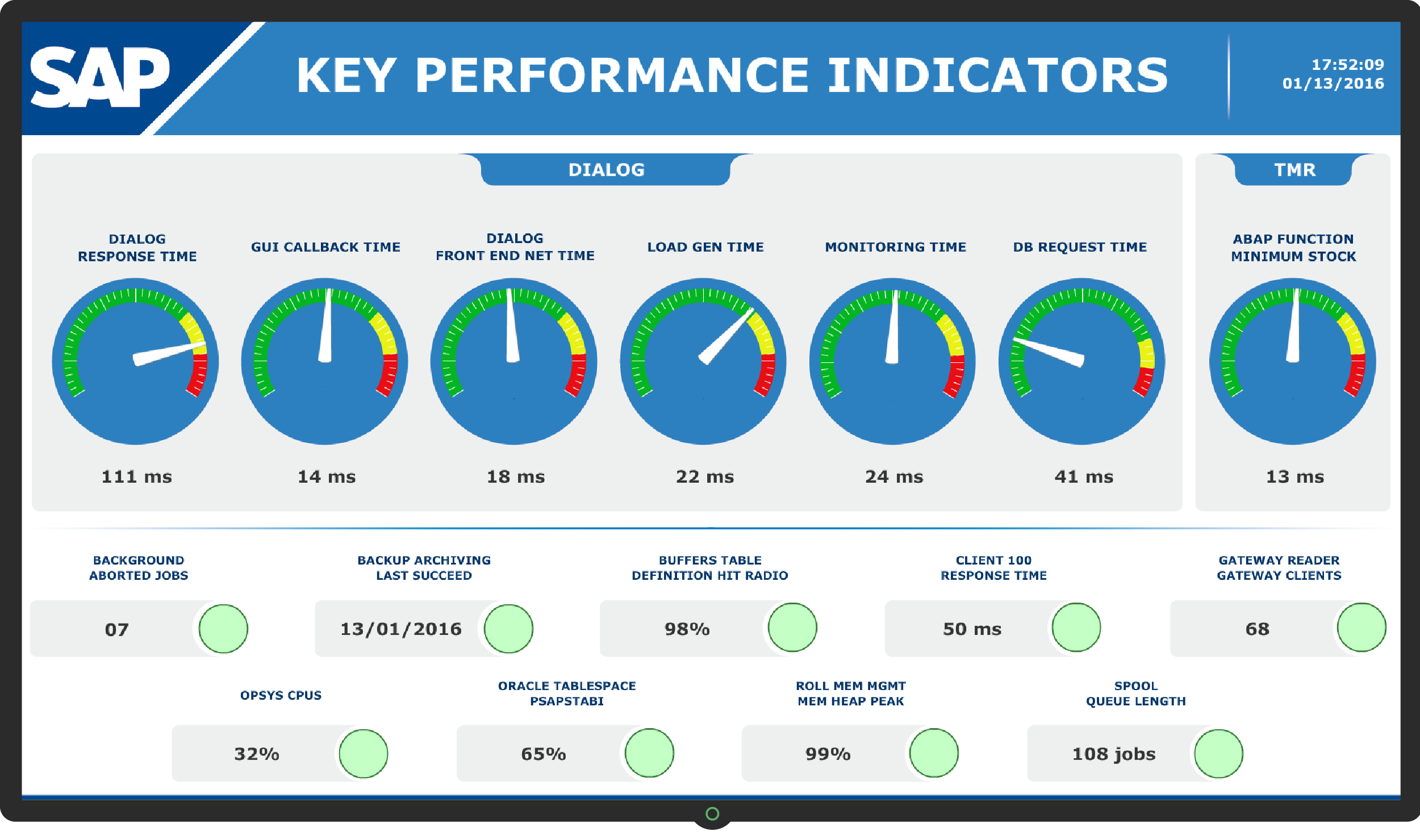SAP – Unified Monitoring
SAP is an integrated business management system. Today it offers numerous collaborative business solutions for companies. By having an architecture composed of a large number of applications, its management is a crucial mission in the IT environment for users of this platform.

Its monitoring can be quite a challenge in complex environments and to maintain a structure with a high level of availability a real-time monitoring is required using tracking metrics aligned to the business. Thus, we will have data to answer the following questions:
- How is the performance of the SAP service going?
- What is the root cause of the problems arising from SAP applications?
- How to extract business indicators of ERP, CRM, management of the product life cycle or management of the supply chain?
To answer these and other questions, OpServices has developed a customization in the OpMon, software for managing the TI infrastructure and business processes. This monitoring is performed by means of the connection to the CCMS (Computing Center Management System) via interface RFC SDK of SAP available on http://service.sap.com.
Using OpMon to monitor SAP
The OpMon has a vast library of KPI monitoring the SAP platform, besides allowing the customization of the items to be monitored. This customization, developed, returns any value tables that are essential to business. Values used for warning and critical are configured directly in SAP and OpMon conducts the reading of these data. The display of business KPIs, obtained directly from ERP, allows the construction of business dashboards with a real-time view on the OpMon platform. Below is an example of a dashboard with monitoring of indicators extracted from SAP:
This allows, among other things, making a drill-down process (the ability to search the information to the source) of a SAP application. Which is of great value to business, as the players who can bring this summarized information and consequently identify and anticipate problems that are not possible to solve without this information are rare. Furthermore, it allows the user to configure alarms and generate performance reports of the metrics of the CCMS component such as, for example, connection time, performance, status and attributes logs. And of course, all in real time.
SAP System Performance Indicators Dashboard
SAP indicators
- Update requests (SM13);
- SAP system performance (ST03);
- SAP dispatcher (SM50);
- System log message (SM21) SAP memory (ST02);
- Application servers—message server;
- Transactional RFC (SM58, SMQ1, SMQ2, SMRQ, SMQS);
- Queued RFC (SMQ1, SMQ2, SMRQ, SMQS);
- CCMS (RZ20);
- Background jobs (SM37);
- SAP database server monitor and administration (DB2);
- DBA planning calendar (DB13);
- Backup status (DB14);
- Gateway (SMGW);
- Printing—spool errors (SP01—SPAD);
- Logon groups (SMLG).
This type of monitoring is a major difference of OpMon and is used by companies with a high level of maturity in corporate governance and extensive knowledge of their business processes. The possibilities of monitoring are many and can measure from the performance of these applications to indicators of business processes of the procurement applications, ERP, CRM, management of product life cycle, financial management, supply chain management, etc.
Perhaps the most interesting element related to monitoring SAP is managing the user experience, Customer Experience Management. Module of the OpMon that continuously simulates SAP applications which are critical to the business, generating alarms and reports to discover:
- What is the real dimension of the problem?
- In which situations do the problems occur?
- What is the response time of each step of the application?
- In which time, or specific times, do the problems occur?
- Which other systems compete for the same resources at these times?
- What are the real impacts of the problem?
Decision makers today have a very large range of options to enhance IT management and increasingly improve the services available. It is up to them to decide about the tools and management methods that will be most appropriate to the stage of maturity of the organization. If the decision is focused on improving the business processes, OpMon will certainly help much.



